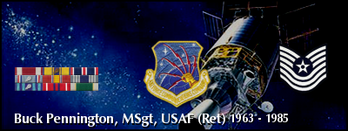In USAF news… Unmanned Aerial Systems have been getting a lot of attention this past week as USAF rolled out its Unmanned Aerial System Flight Plan last Thursday afternoon at the Pentagon. Here are a couple of items from last Thursday's briefing, courtesy (as usual) of the AFA's Daily Report:  UAV as Sixth-Gen Fighter?: Lt. Gen. Dave Deptula, the Air Staff's head of intelligence, surveillance, and reconnaissance, said it is not unrealistic to imagine an unmanned aerial vehicle as successor to fifth-generation fighters—the F-22 and yet-to-field F-35—in our national military strategy, however he added that UAVs still require some technology maturation before they would be ready to assume that mantle. "It depends on your definition of fighter," Deptula said during the July 23 press briefing on the service's new unmanned aerial systems flight plan. Terminology has a habit of fixing us in the past, he said. "That quite frankly has been some of our challenges with labeling fifth-generation fighters," Deptula explained. He added that fighters such as the F-22 bring a wide array of capabilities to a fight, from electronic attack to standoff strike and ISR sensors. Today's fifth-gen fighters are flying sensor platforms that will have the ability to penetrate denied airspace and extract information while also retaining traditional strike capabilities. "An F-22 or an F-35 … does not perform the same functions as a P-51 did," he said. UAV systems will certainly be used to deliver weapons on a target in the future, he said, but if the question becomes dealing with controlling airspace filled with enemy aircraft, technology is not yet at the point where an unmanned vehicle can achieve the level of spherical situational awareness, assimilation, and translation of information into action that a human being in a cockpit can. "At some day, we might be able to, but until then, we'll still have manned aircraft," he added.
UAV as Sixth-Gen Fighter?: Lt. Gen. Dave Deptula, the Air Staff's head of intelligence, surveillance, and reconnaissance, said it is not unrealistic to imagine an unmanned aerial vehicle as successor to fifth-generation fighters—the F-22 and yet-to-field F-35—in our national military strategy, however he added that UAVs still require some technology maturation before they would be ready to assume that mantle. "It depends on your definition of fighter," Deptula said during the July 23 press briefing on the service's new unmanned aerial systems flight plan. Terminology has a habit of fixing us in the past, he said. "That quite frankly has been some of our challenges with labeling fifth-generation fighters," Deptula explained. He added that fighters such as the F-22 bring a wide array of capabilities to a fight, from electronic attack to standoff strike and ISR sensors. Today's fifth-gen fighters are flying sensor platforms that will have the ability to penetrate denied airspace and extract information while also retaining traditional strike capabilities. "An F-22 or an F-35 … does not perform the same functions as a P-51 did," he said. UAV systems will certainly be used to deliver weapons on a target in the future, he said, but if the question becomes dealing with controlling airspace filled with enemy aircraft, technology is not yet at the point where an unmanned vehicle can achieve the level of spherical situational awareness, assimilation, and translation of information into action that a human being in a cockpit can. "At some day, we might be able to, but until then, we'll still have manned aircraft," he added.
 At the official rollout of the Air Force's new Unmanned Aerial System Flight Plan 2009-2047, July 23, 2009, UAS task force commander, Col. Eric Mathewson, told reporters that the UAV does have a cockpit, what operators call the "1-G cockpit," the ground control station that he said offers one of the UAS primary strengths—its persistence. Here, A1C Caleb Force assists 1st Lt. Jorden Smith in locating simulated targets during an MQ-1 Predator training mission April 22, 2009, at Creech AFB, Nev. Force is a Predator sensor operator and Smith is a Predator pilot. Both are assigned to the 11th Reconnaissance Squadron. US Air Force photo/SrA. Nadine Y. Barclay
At the official rollout of the Air Force's new Unmanned Aerial System Flight Plan 2009-2047, July 23, 2009, UAS task force commander, Col. Eric Mathewson, told reporters that the UAV does have a cockpit, what operators call the "1-G cockpit," the ground control station that he said offers one of the UAS primary strengths—its persistence. Here, A1C Caleb Force assists 1st Lt. Jorden Smith in locating simulated targets during an MQ-1 Predator training mission April 22, 2009, at Creech AFB, Nev. Force is a Predator sensor operator and Smith is a Predator pilot. Both are assigned to the 11th Reconnaissance Squadron. US Air Force photo/SrA. Nadine Y. Barclay
The Persistence-Plus Cockpit: At the official rollout of the Air Force's new Unmanned Aerial System Flight Plan 2009-2047, Thursday afternoon, the service's vice chief of staff, Gen. William Fraser, acknowledged that most focus on UAS operations is on the unmanned aerial vehicle itself, but he said, "While the operator may not be sitting in the cockpit, at the heart of these unmanned systems, and really at the core of all of our missions, are highly skilled airmen." (Read our initial coverage, which reports the shift to a future in which UAVs are dominant.) UAS task force commander, Col. Eric Mathewson, cast a slightly different light when he said that one of the strengths of UAVs is its "1-G cockpit," the ground control station in which he "can always have a fresh crew, which enables any sort of persistence." Gen. Dave Deptula, the Air Staff's intelligence-surveillance-reconnaissance czar, called that persistence capability "first among equals." He said, "What UAS is bringing to the table is the ability to stay in position or maneuver over large areas for a long period of time, and that's where a person in an aircraft becomes a limitation." The Air Force flight plan, they say, is meant to institutionalize USAF's vision for developing and resourcing unmanned capabilities for the foreseeable future. Deptula noted: "We are today, with unmanned aerial systems, about where we were in the 1920s with manned aircraft. Lots of potential out there. And, we have to change the way that we think about using these systems across the entire spectrum of military operations." Mathewson said the document does not lay out specific solutions but rather "concepts and possibilities" that will be filled in as the service talks with industry, academia, the other services, and allies. Initiatives underway include the development of multi-aircraft control by a single pilot (currently undergoing testing at Creech AFB, Nev., according to Mathewson) and a "payload agnostic platform" or a modular platform that could accommodate different payloads to perform a range of missions, from ISR to mobility and strike. "We're thinking about multi-mission in the large sense," he said and added, "We think this is potentially where we are going to go." (Deptula briefing slides)(Mathewson briefing slides) (Air Force UAS flight plan) (Briefing transcript)
In the "Wonders of Modern Technology" Department… C-SPAN was at the Pentagon to cover the UAS Flight Plan roll-out and taped Gen. Deptula's and Col. Mathewson's presentations. And then the wonderful folks at C-SPAN made the video available for Air Force geeks to publish on their blogs to view at their leisure, as well. So… here it is here's a link to the presentations. The video is 56 minutes long and includes some fascinating information. The Q&A session with the press takes up about half of the video runtime. (ed note: C-SPAN's embed code has some issues, the video would not appear on EIP even after considerable messing with it. Thus: a link.)
I'm fond of telling SN1 that he ain't serving in his father's Air Force and that is most certainly true. I didn't serve in MY father's Air Force, either. But I'm thinking my grandchildren (if they choose to serve) will be in a quite different Air Force… if it still exists as a service… than any of their forebears. I'm not making a value judgment here, which is to say the changes coming down are neither "good" nor "bad." But they most certainly will make for a radically different United States Air Force.
 Earlier this week I responded in the affirmative to an e-mail from my Good Friend Tim at cigar.com, quoted in part:
Earlier this week I responded in the affirmative to an e-mail from my Good Friend Tim at cigar.com, quoted in part:






























.jpg)



